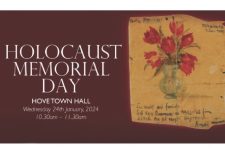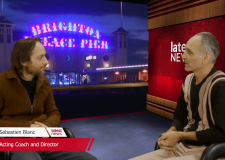World Stories: Young Voices
Brighton Museum is now displaying rare and fascinating pieces from around the world

A very special new gallery will be opening at Brighton Museum on 23 June. This innovative reinterpretation of the Museum’s internationally important ethnographic collections have been displayed with the involvement of young people in Brighton from all backgrounds.
World Stories, a gallery for the 21st century, presents an exciting experience for families and young adults, catering for different learning styles through contemporary displays and hands-on activities. It considers how culture, in all its forms, brings people together and connects yesterday to today.
There are six principal displays; historic and contemporary Iranian artworks reveal the power of the written word; festive dress links Burmese people to their traditional roots; football is shown as a shared passion and vehicle for aspiration in Brighton and Mali; tools for hunting, together with newly created artworks, represent Arctic life; ancient burial items from Peru reflect life lived 500 years ago; and ceremonial sculpture and masks from Papua New Guinea connect the living and the dead.
In the section, ‘Iranian Identity Through Words And Art’, traditional artefacts are complemented by new works from contemporary Iranian artists, which are also part of a developing capsule collection establishing Brighton as a centre for contemporary, subversive art and design. Nader Davoodi is an award winning artist, photographer and photojournalist who captures the zeitgeist of contemporary Iran. Women are the main focus of his work, and the print purchased by Brighton Museum has never been exhibited in Iran, where an image of a woman without a head scarf cannot be seen on public display. Islamic tradition allows women to show only their faces in public. This portrait focuses on the face; the rest of the picture is hidden under a page of an old text from a torn book, which gives the work a sense of religion and tradition.

The display, ‘Celebrating the Manau’, demonstrates how this festival, held on Kachin State Day, is an opportunity for the people of North Burma to celebrate their history and culture in difficult political times. Splendid ceremonial outfits worn on these occasions are on show, and also a spectacular, bejewelled dress made especially for Brighton Museum by designer San Bawk Ra who creates Kachin-style fashions with a wow-factor, for Burmese pop stars and celebrities.
In complete contrast, ‘Football In Brighton And Bamako’, shows how football unites communities throughout the world, and is enjoyed by young people whatever their economic circumstances. Look out for the Brighton & Hove Albion football shirt made to celebrate the opening of the Amex Community Stadium and the shirt for Djoliba Athletic Club, one of the two biggest football teams in Mali. There’s even a Malian football made from recycled materials including charcoal, plastic bags and socks; and much more.
Indigenous Arctic peoples have survived through understanding their environment, using resources sustainably, and adapting. Inuit elders have given personal responses to objects in Brighton’s collection, which elucidate the Arctic Worlds display. They also advised the Museum on the purchase of contemporary items, to bring the collection up to date. Early objects on display include a snow knife for building igloos, a bird sling net and narwhal tusk harpoon as well as a bow drill with hunting scenes. Contemporary arctic artists reflect both tradition and change. Timootie Pitsiulak is recognised for his figurative drawings, set at an angle in abstract space. His subject matter is modern: machinery used during sea lifts, boats stocked with supplies, and ATVs crammed with people, as seen in ‘Family of Eight’. Many of Jamesie Pitseolak’s sculptures are based on puns, such as ‘Toothbrush’ (2008), which is made from stone, caribou and plastic.

‘Objects for the Afterlife’ contains fascinating ancient burial items from early Peru, including armlets, which probably belonged to a young woman of high status, dating between 1200-1470. Be sure to listen to recorded, spoken responses to these Peruvian treasures performed by young people from the Whitehawk Art Group.
‘Making Malagan in Papua New Guinea’ demonstrates how ‘Malagan’ (dramatic wooden sculptures, representing ancestors and made by New Ireland carvers for centuries) are used to commemorate the dead, reminding clan members of their shared history. Malagan are paraded during big feasts, marking funerals and initiations, featuring song, dance and performance. The magnificent new acquisition, ‘Bolxuaam Big-Mouth Fish Sculpture’ (c.1993) by Michael Homerang shows a figure on a fish’s back, wearing a shell pendant representing the clan. It is carved from soft wood, decorated with sea snail shells and painted with natural pigments including lime, charcoal and earth ochres.
World Stories is part of the 2012 Cultural Olympiad’s ‘Stories of The World’ project, visit www.brighton-hove-rpml.org.uk/museums.




















